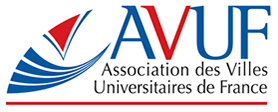
Dropout Deterrence
Dropout rates plague MOOCs, despite strong student interest. According to the most recent edX study, only 17% of enrollees attended over half their class and only 8% earned a certificate of completion. However, the figures vary, with humanities and social science classes producing more certificates than IT and science classes. To combat paltry participation, NovoEd assigns its students group projects, often for the benefit of companies and nonprofits.
College Credit
Academic recognition for MOOCs is growing. Starting this fall, edX and Arizona State University will allow students to complete their freshmen year by taking eight MOOCs. Coursera, together with the University of Illinois, will soon unveil its fully MOOC-based MBA. Tuition costs $20,000.
Real-World Recognition
American employers are also fans of MOOCs. Coursera co-founder Daphne Koller explains, "MOOCs have become hiring criteria for more and more employers. They see it as a sign that the candidate is persistent and able to follow a high-level course." Many students list MOOCs on LinkedIn and some say that has attracted employers. Company training MOOCs are also on the rise.
Money-Making Models
Ways to make MOOCs profitable go beyond fee-based certificates. Coursera has explored B2B ventures and company classes, for example. Its University of Illinois MBA, whose profits will be split with the school, is another promising model.
Many platforms, such as Udemy, have opted for paid content. Udacity offers nanodegrees for $200 a month. The degrees, comprised of professional skill development courses, can be earned in six to nine months. The ever-popular Fedora has taken a different route. Its professors receive a cut of the profits that is proportionate to their course enrollment.
Increasingly, schools are forming consortia to share funds, classes and platforms. Others are replacing scheduled sessions with on-demand classes to attract more students. Innovation is boundless in the birthplace of MOOCs.






